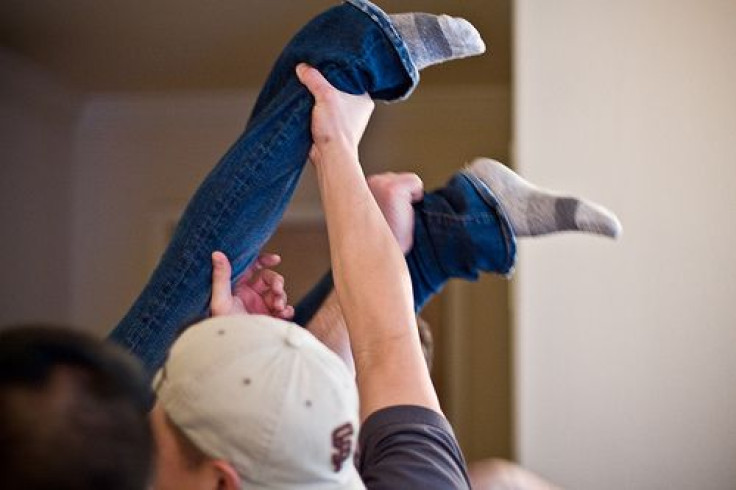Binge Drinking Standards Updated: Is There A ‘Smartest Strategy’ For Controlling Consumption?

Consider the average Saturday night out. There’s a good chance that many people, if not most of them, will consume more than four or five drinks within two to three hours’ time. But according to the new standards set by the Centers for Disease Control and Prevention (CDC), such an evening would now fall under the category of binge drinking.
By the agency’s new standard, it claims some 38 million Americans “drink too much,” defined as any combination of binge drinking, high weekly use (15 drinks for men, eight for women), and any alcohol consumed while pregnant or under the age of 21. This overconsumption burdens the United States to the tune of $224 billion, the agency says. And given the vast under-communication between physicians and nurses and their patients, not to mention the raft of dangerous effects of intoxication, the cost may only continue to rise.
While the CDC doesn’t classify these 38 million Americans as alcoholics, there are unsettling trends it hopes to make people aware of. Alcohol contributes to an estimated 88,000 deaths each year in the U.S., more than AIDS, tuberculosis, or violence. Excessive drinking can also lead to a range of negative consequences — sometimes directly, such as in the case of liver disease, heart disease, and breast cancer; and indirectly, through poor decision making, such as sexually transmitted diseases, unintended pregnancies, fetal alcohol spectrum disorders, sudden infant death syndrome, and motor-vehicle crashes.
But with all of these consequences to keep in mind, some experts feel the new definition of binge drinking may be keeping consumers on too short a leash. David Ford, executive director of Tallgrass Recovery, a rehabilitation clinic in Sioux Falls, S.D., said that while binge drinking deserves more attention from a physician care perspective, the new standards border on excessive.
"Do I think four drinks in a long evening is binge drinking? Personally, no I don't," Ford told Keloland Television. "Is it good that the CDC said this, if you look at what they've done with smoking? Maybe so. It contributes more to the cost of health care in the United States, and it's one of the least treated.”
How To (Truly) Drink Responsibly
Ford is correct in his assessment that smoking costs less than alcohol consumption in the U.S. — $197 billion to alcohol’s $224 billion — and it’s for an interesting reason. Nicotine is a drug, of course, just as alcohol is a drug. But even though alcohol is technically a depressant, and nicotine a stimulant (and also, in some ways, a depressant), the contexts in which people consume both tend to manifest the opposite effects.
Alcohol commercials are infamous for telling viewers to “drink responsibly.” This amorphous phrase has been engrained in the ad-watching public since it appeared in the 1970s, yet what “responsible” drinking entails isn’t agreed upon, and thus, produces many ways in which to do it irresponsibly. Perhaps the simplest measure is intoxication. The legal limit is 0.08. For a 185-pound man to reach that in an hour, he has to drink five drinks. A 130-pound woman need only drink three. What this means is both of these people, if they want to drive home, should stop drinking once they reach that point — an easy thing to grasp as a sober person. But sober people aren’t the ones making the decisions; drunk people are.
This rational decision becomes much harder when the person making it has already tasted inebriation. Since intoxicated people tend to want to stay intoxicated, a smarter strategy, according to the behavioral economist Rory Sutherland, would be to set up an easy-to-follow binary system: collect your friends and work out a schedule so that rather than limiting each other collectively, on certain nights one person simply doesn’t drink at all. Then the duty rotates the next night out.
“That has two virtues,” Sutherland explained in a TED Talk last year. “It’s absolutely binary. It doesn’t require you to exercise any self-control when you’re drunk, because you don’t get drunk. Secondly, your friends can engage in the same thing at the same time, so you’re never under any social pressure.”
So while some may view the CDC’s standards as too restrictive, the takeaway for consumers is that adhering to practices of healthy alcohol consumption can be organized ahead of time to anticipate the night’s events. The CDC states that while 78 percent of binge drinking is done by people over the age of 26, 90 percent of the drinking done 21 and under is binge drinking. Finding solutions to that problem, one perhaps more alarming than alcohol’s financial burden, may soon become more pressing than simple messages to “drink responsibly.”



























